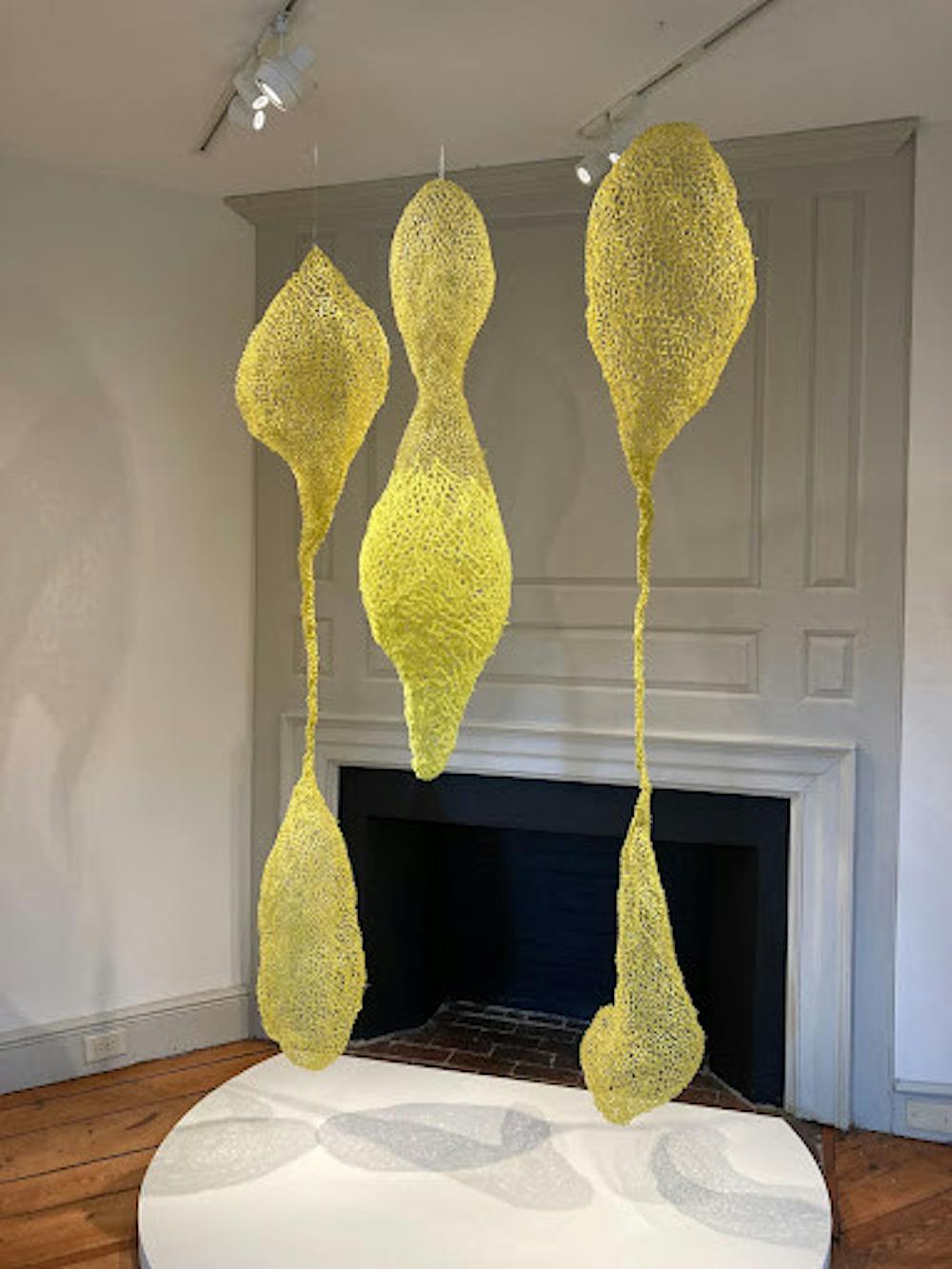By Lilly Ward
Staff Writer
With art, it’s not just the final product that matters to the artist, but the process of losing yourself in the intensity of breathing life into a concept that has yet to be realized. In the Princeton Bainbridge Gallery’s newest exhibit, “Threading Memories,” artist MiKyoung Lee twists pipe cleaners, twist ties and zip ties into ethereal forms.
For Lee, who creates works of fiber and textile art that can be 40 feet in length, her process involves both “order as well as chaos.”
“When you’re making artwork it always requires some tension and intensity. I think that it’s an important component for making art,” said Lee.
Lee, an associate professor, program director of Craft and Material Studies, and head of the Fibers program at University of the Arts, developed an interest in textiles (or fiber based materials) during her childhood in Korea, watching women weave and stitch to create textiles. Lee has had 12 solo exhibitions and has exhibited in France, Korea, New York, Arizona, Chicago and Pennsylvania. Her work was also exhibited in the Philadelphia Museum of Arts 2021 exhibition, “New Grit: Art & Philly Now.”
Her works of art, which consist of household materials like spools of sewing thread, twist ties and zip ties, twist and weave together to create abstract forms, referencing the rich tradition of textile weaving in Korea. The unorthodox use of materials provides an opportunity to meditate on the meaning of natural and the synthetic, and how we think about mass-produced materials.
Nestled into the center of the perfectly square room in the historic Bainbridge house, “Bubble #3” is an oblong object constructed of red pipe cleaners twisted to form a network. It hangs suspended delicately from the ceiling as if floating above the ground, creating lace-like shadows below. The form recalls a cocoon or a womb. Lee created this piece after giving birth to her first child, reflecting on her new identity and role as a mother as well as the physical changes brought on by motherhood.
Creating “Untitled,” the largest piece in the gallery, involved taking single strands of thread and working with them over the course of several weeks to form a mass of pink thread that is chaotic, yet carefully engineered. The threads are unified into one cohesive form with soft fuzzy edges. Lee’s approach offers insight into the labor intensive process of traditional textile making, inspired by her childhood memories of watching her grandmother work with thread. “Untitled” is accompanied by smaller framed “thread drawings,” which require meticulous stitches, demonstrating Lee’s mastery of thread.

Detail of “Untitled,” 2011 (photo courtesy of Lilly Ward)
Although “Untitled” may be Lee’s largest work in this exhibit, the scale of Lee's artwork often is much larger. However, for this exhibition, displaying smaller works allows the viewer to fully appreciate the personal nature of the artwork, while making good use of the compact space in the gallery, according to Zoe S. Kwok, an associate curator of Asian art at the Princeton Art Museum. This prioritization engagement with the work is most apparent in the gallery containing “Bubble #3.”
“The idea was to have something that was sort of larger scale yet intimate in feel, that draws the viewer in,” said Kwok.
Being able to see the art up close highlights the intensity of Lee’s process as each individual, thread or pipe cleaner becomes part of a network or community. The idea embracing chaos as well as order, is something that Lee finds central. Although order may represent the control and stability, it is the inclusion of the expected that makes this process so compelling for Lee.
Just as order is a part of life, so is chaos. Rather than try to prevent chaos and uphold order, “we should allow it to happen,” said Lee.

“Bubble #3,” 2008 (photo courtesy of Lilly Ward)







